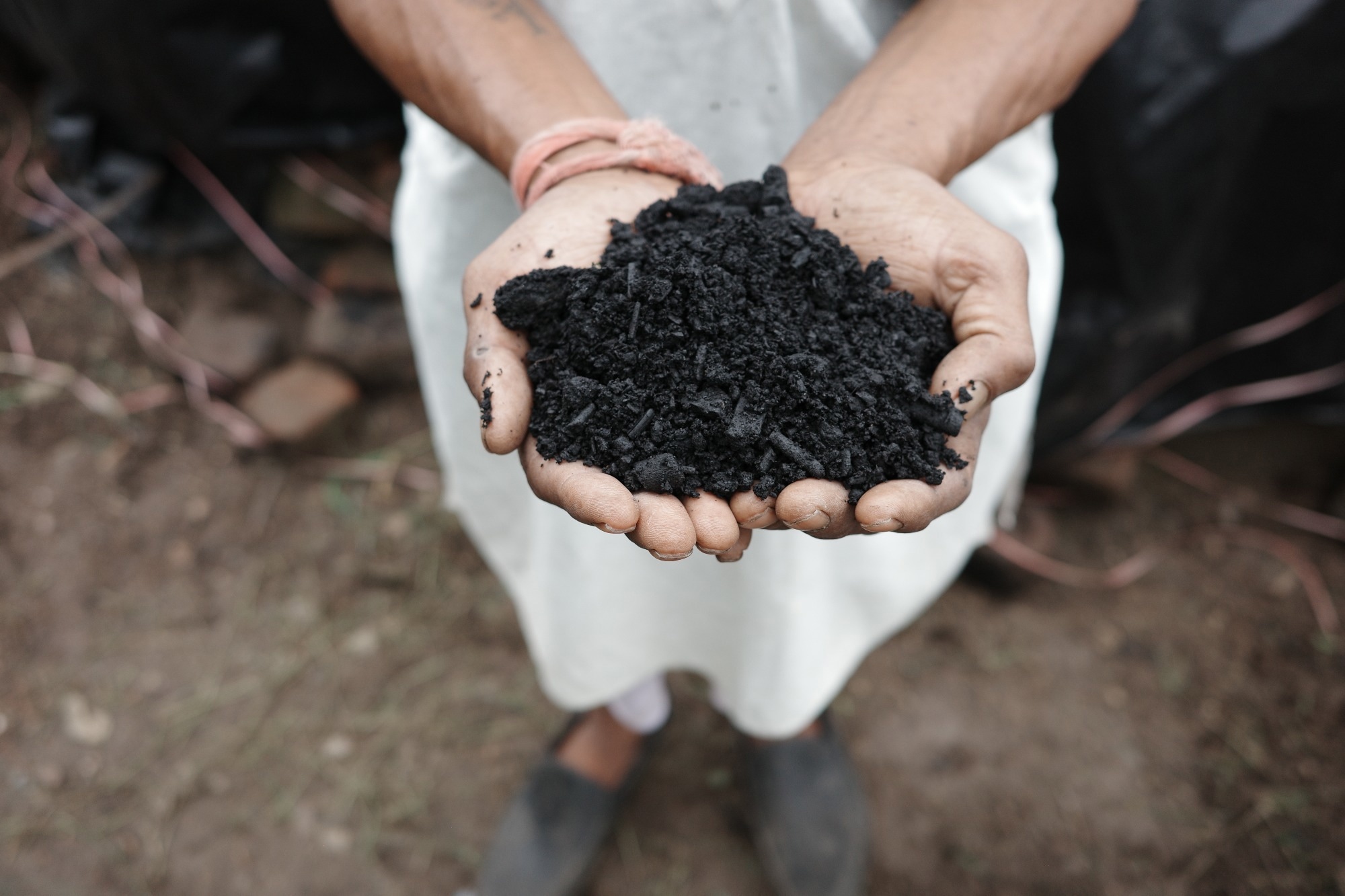Researchers have found that incorporating small amounts of biochar from agricultural waste into ultra-high-performance concrete (UHPC) can enhance its strength, reduce shrinkage, and improve durability, offering a more sustainable alternative to traditional cement.
 Study: Biochar modification enhances mechanical and durability properties of cement-based materials. Image Credit: shyam_natarajan/Shutterstock.com
Study: Biochar modification enhances mechanical and durability properties of cement-based materials. Image Credit: shyam_natarajan/Shutterstock.com
The team tested replacing 0.1–24 % of cement with apricot shell biochar, along with a fixed 8 % blend from other shell sources. While higher replacement levels reduced workability and density, a 1 % addition of biochar increased compressive strength by 2.65 %, showing promising results for low-percentage mixes.
Background
UHPC is valued for its exceptional strength, durability, and workability; attributes that stem from its dense microstructure, which extends service life and reduces maintenance needs compared to traditional cement-based materials.
However, widespread use is limited by UHPC’s high production cost, carbon emissions, and energy demands. This has led to growing interest in using biochar - carbon-rich material derived from agricultural waste through pyrolysis - as a partial cement substitute. While its benefits have been explored in regular concrete, research on biochar’s impact on UHPC’s microstructure and long-term performance remains limited.
This study aimed to fill that gap by evaluating how biochar from apricot, date, palm, and peach shells affects the mechanical and durability properties of UHPC mortar when used in varying proportions.
Methods
The researchers used four types of biochar derived from locally sourced agricultural shells. Each mortar mix maintained a water-cement ratio of 0.24 and included the same quantities of sand, water, silica fume, and superplasticizer. Fourteen different formulations were created - one without any biochar as a control.
After curing for 3 and 28 days, samples were tested for slump (workability), density, compressive strength, drying shrinkage, water permeability, chloride resistance, surface morphology (via SEM), and pore structure (via mercury intrusion porosimetry).
Results and Discussion
Workability declined steadily as biochar content increased. At a 24 % replacement level, slump dropped by 5.38 % compared to the control, due to the rough shape and high carbon content of biochar, which absorbs water and reduces flow.
Density decreased slightly at 3 days for all biochar mixes. However, at 28 days, mixes with 0.75–2 % biochar showed a small recovery, possibly because retained water within the biochar promoted further hydration. At 24 %, density dropped more significantly, likely due to increased porosity around biochar particles.
Compressive strength peaked at a 1 % biochar addition, with a 2.65 % increase over the control. Researchers attributed this to moisture stored in the biochar acting as nucleation points for hydration. But beyond 1 %, the structural benefits declined as the porous biochar began to weaken the matrix.
Shrinkage was reduced across biochar mixes, particularly at lower dosages. Biochar’s stable, porous structure seemed to regulate internal moisture during curing, acting like a built-in curing aid.
Microstructure analysis backed this up. SEM images of the 1 % biochar mix showed denser hydration products and lower porosity, while the 24 % mix revealed more voids. Similarly, electrical flux was reduced in low-percentage mixes, indicating better resistance to chloride penetration, but increased at higher biochar contents due to the growth of capillary pores.
Conclusion
The study demonstrates that small additions of agricultural biochar - especially around 1 % - can improve the mechanical performance and durability of UHPC mortar. These enhancements include higher compressive strength, reduced shrinkage, and better resistance to moisture and chloride penetration.
By repurposing agricultural waste, this approach offers a more sustainable path for UHPC production without compromising performance, an encouraging step toward greener construction practices.
Journal Reference
Wu, F. et al. (2025). Biochar modification enhances mechanical and durability properties of cement-based materials. Scientific Reports, 15(1). DOI: 10.1038/s41598-025-06968-w, https://www.nature.com/articles/s41598-025-06968-w
Disclaimer: The views expressed here are those of the author expressed in their private capacity and do not necessarily represent the views of AZoM.com Limited T/A AZoNetwork the owner and operator of this website. This disclaimer forms part of the Terms and conditions of use of this website.